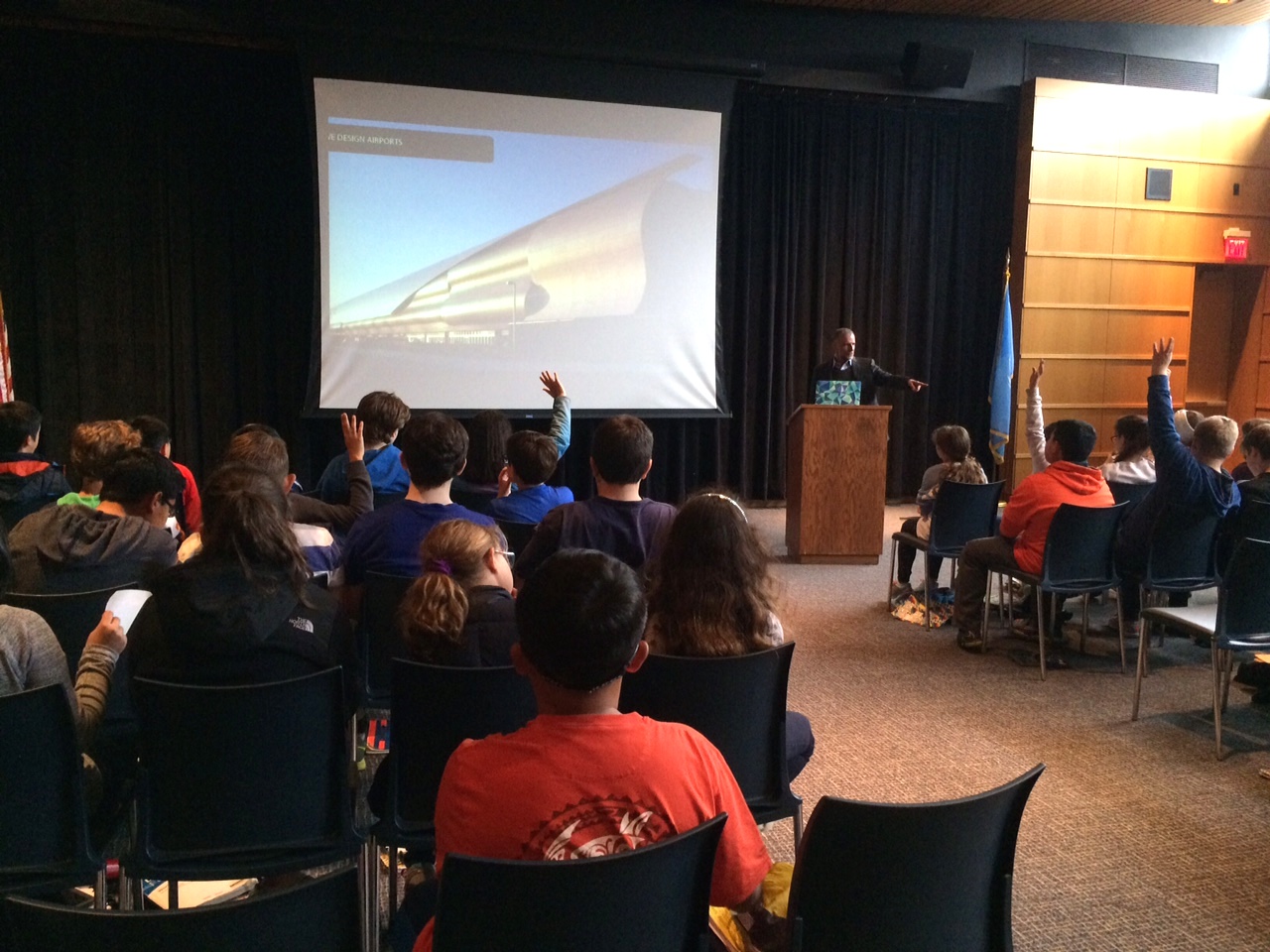Hajjar STEM Center Architect, Mark Thaler from the leading architecture firm Gensler spoke to the 6th Grade about City Planning and Architecture. Mark is one of Gensler’s Education Practice Area leaders in the New York office, and he develops education projects at all scales, from classroom to campus. His projects span the academic spectrum, from K-12 through higher education, both nationally and internationally. Mark has a passion for creating learning spaces that inspire, and collaborates with his clients to create these environments. His projects have received numerous awards and his work has been featured in prominent publications including Architects Choice. In conjunction with the current Studio Art 6 PBL unit titled “City Design Remix”, Mark spoke about some of the key elements of city planning and design. During his talk, Mark engaged students with questions about different aspects of “green” cities and the elements that make cities great. He then went on to speak about a range of different buildings around the world that were designed by architects at his firm. Students enthusiastically responded to questions about the relationship between the function and design of buildings ranging from airports, to schools, to art museums. In addition, the group discussed ways in which those buildings fit into their particular surroundings, from rural to urban settings, and the materials and design features that make those structures green. Mark finished his talk by sharing some insights into working collaboratively as an architect and how to be a good team member.

The 7th grade students are actively engaged in a PBL project called Writing Refugees. The driving question of the unit is: How are stories used to communicate ideas? Students will go through a set of experiences that will give them an idea of what it is like to be a refugee. Experiences include viewing two virtual reality short films produced by the United Nations and New York Times, reading two novels on refugees, mapping a refugee’s journey, and examining various media to investigate how people are using stories to communicate ideas about refugees. The culminating project for the unit is for students to work in small groups to collaboratively write, illustrate, and publish either a fiction or nonfiction children’s picture book about one refugee. Students will then read their books to lower school students and donate them to a library. The kick off for the project was a two hour UNHCR-designed refugee simulation run by the 7th grade teachers. Students were taken through a set of activities that simulate, as much as possible, the challenges that refugees face. All of the experiences are intended to help students develop empathy and help them understand how people use stories to communicate ideas.

The 8th grade students recently completed their MAD (Making A Difference) projects. One student took it a step further with his classmates. His project was on CODEing in schools, and last week he offered a class on it to his classmates. Good follow up!
